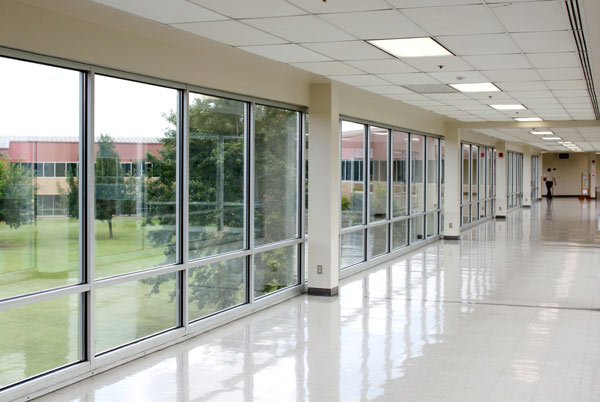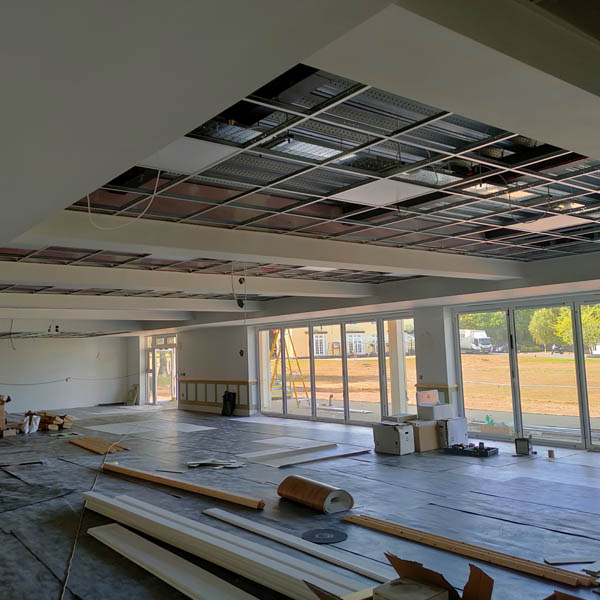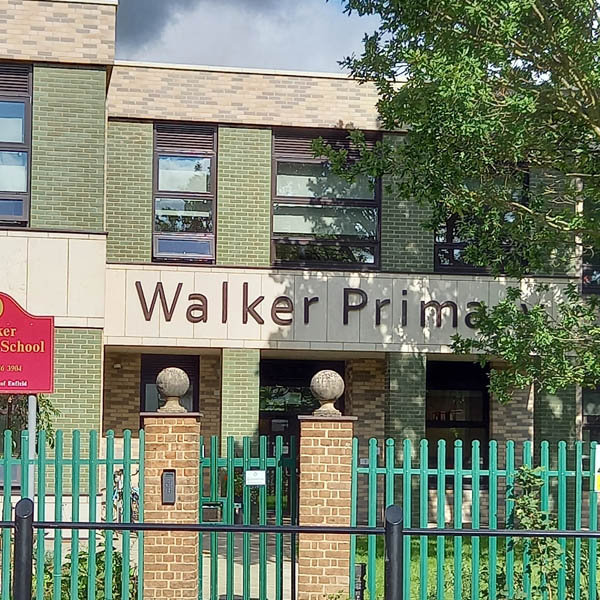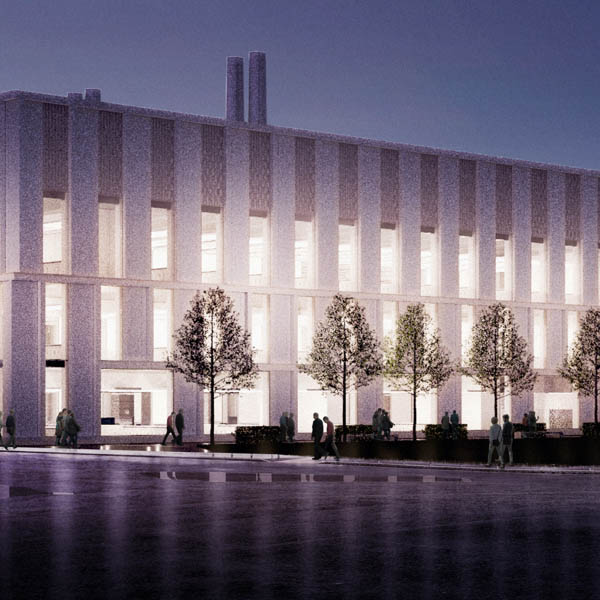Lighting controls for schools, universities and education environments
Why Choose flex7?
With over 25 years of experience in the education sector we can offer numerous energy efficient and functional lighting solutions for your school, college or university building. Because the flex7 System simply plugs together installation time, not to mention future maintenance, is dramatically reduced.
Whether you require daylight linking, corridor hold or separate whiteboard switching we can provide you with a lighting scheme perfectly suited to your needs. We can help you select the right products for your project, and once they’ve been delivered it’s a simple case of plugging everything together to complete your installation. It really couldn’t be simpler.
Give us a call on: 0208 580 1066

Considerations for lighting in school and university projects:
Maximising daylight is the most important thing to bear in mind when planning lighting for a classroom, lecture theatre or other teaching space. It’s been proven that natural daylight enhances concentration and promotes well being. Of course reducing carbon emissions has never been more important than it is today, so finding a way to reduce energy usage wherever possible is imperative.
Installing daylight linking lighting controls is an easy win on both counts. They can be used to ensure that wherever possible natural light is taken advantage of, and artificial lights remain on only when necessary. If daylight linking controls are used luminaires will dim down or turn off whenever there is sufficient natural light available.
According to the Carbon Trust, lighting accounts for 20-25% of the total energy used in schools. Significant cost savings can be made by switching to energy efficient lighting equipment. Occupancy sensors alone can reduce lighting costs by as much as 30%.
Public buildings with many occupants are much more likely to suffer with lights being left on in unoccupied rooms for long periods of time. Occupancy sensors can be used to ensure that lights are only kept on in areas while they’re in use. Once installed, occupancy sensors will automatically turn off lights when a room or area has been vacated, rather than having to rely on individual users to remember to turn them off as they leave.
Schools, colleges and universities are great examples of multi-use buildings. Not only might multiple users use a single classroom over the course of a day, spaces are also used out of hours by clubs, and the local community. This means lighting needs to be flexible, and easy to use.
Key features of the flex7 System
Speed of installation
Because the flex7 System simply plugs together installation time, not to mention future maintenance, is dramatically reduced, with minimal disruption on site.
Easy maintenance
Once the system is in place maintenance is not a problem. Luminaires and controls can be isolated by simply unplugging them individually, rather than turning off power to the whole circuit. If a product needs to be replaced or upgraded, simply unplug and replace without disrupting everyday use of the building.
LSHF cable to BS EN 50525-3-11
All of our prewired leads are available in Low Smoke Halogen Free (LSHF) cable in accordance with BS EN 50525-3-11 and CPR rated to category Cca, so you can be assured that they meet required safety standards for public and commercial buildings.
Protected Extra Low Voltage
All of our lighting controls operate at PELV, which means that switch drop cables can be set at any depth in the wall, and won’t require extra protection. This makes them a cost effective way of complying with IET 18th edition wiring regulations.
Easy to reconfigure
Once the system is in place if there’s a change in requirements it’s not a problem. Its plug-together nature means that you can easily add more luminaires, upgrade to dimming control or reconfigure an entire area with minimal disruption to users
Integrated Emergency Test Facility
Our lighting controls are available with integrated emergency test. They can easily be networked together, and there is no need for separate switches for each circuit or phase. A single key switch can test emergency luminaires across multiple circuits or phases. Our lighting controls operate at protected extra low voltage, so the voltage at the test switch will operate at below 50V. This avoids scenarios where multiple key switches are grouped in a centralised, multi-gang enclosure with the potential for 415V to be present, which requires extra labelling as per regulation 514.10.1 of BS 7671
Corridors And Circulation areas
Corridor Hold
Corridor Hold Units from flex7™ will hold lights on in a corridor or circulation area if any of the rooms linked to it are occupied. This is often a requirement for health and safety, or security reasons.
2-Stage Dimming Control
Luminaires in corridors can be programmed to dim down to 50% when a corridor has been empty for a set period of time. After a further period of time, if sensors still haven’t been triggered lights will turn off completely.
Timeclock
The Timeclock unit is designed to hold lights controlled by sensors on for pre-set time periods during the day. A typical installation would involve holding certain lights on in a building – often those in corridors and circulation area, during normal working hours, and allowing them to revert back to occupancy control at all other times.

Classrooms
Absence Sensing
Ideal for use in classrooms, lights need to be turned on manually at switch on the wall but will turn off again automatically once the room is vacant. This option offers greater potential for energy saving than occupancy control, as lights will only be turned on when needed.
Daylight Linking Sensors
Usually incorporating absence or occupancy detection, daylight linking sensors save energy by switching lights off/dimming lights down in a room if there is adequate natural light. The controls are programmed to maintain a constant light level, so that lights will turn on again as it gets dark outside. Graduated daylight dimming options are available, which mean that lights further away from the windows will have a brighter offset.
Independent switching of whiteboard or projector lights
flex7 controls allow the luminaire(s) adjacent to an interactive whiteboard to be controlled in 2 ways. Generally they operate in line with the row/group of luminaires they belong to; switching on/off and dimming as expected. When the whiteboard is being used however, the designated luminaire(s) can be independently switched off to reduce glare, making it easier for the students and teacher to see the content. Once the whiteboard session has ended, the luminaire(s) can be switched on again by the teacher, or simply left if the classroom is to be vacated. Operation of the whiteboard luminaire(s) does not affect any of the other luminaires in its row/group and, if part of an absence/occupancy system will revert to its default state once the room is vacated at the end of the lesson.

WCs, Cleaning cupboards etc.
Occupancy Sensing
Occupancy sensors are ideal for use in areas such as WCs, stairwells and storage areas that are frequently unoccupied. They save energy by turning lights on automatically when someone enters a room, and turning off again once the room has been empty for a set period of time.

Staffrooms and Offices
Absence Sensing
Ideal for use in staffrooms, offices and other spaces used primarily by staff, lights need to be turned on manually at a switch on the wall, but will turn off again automatically once the room is vacant. This option offers greater potential for energy saving than occupancy control alone, as lights will only be turned on when needed.
Daylight Linking Sensors
Usually incorporating absence or occupancy detection, daylight linking sensors save energy by switching lights off/dimming lights down in a room if there is adequate natural light. The controls are programmed to maintain a constant light level, so that lights will turn on again as it gets dark outside. Graduated daylight dimming options are available, which mean that lights further away from the windows will have a brighter offset.

Past Projects
Chapel Hill Primary School, Basildon
flex7 were able to provide a solution that avoided having to use a fully addressable DALI system, which would have involved time consuming & expensive design and commissioning.
Daneshill School
Presence detection was required in corridor and WC areas while office areas were all fitted with DALI absence detection. Using flex7 Starter Distribution Boxes and prewired luminaire leads meant that the installation could be completed quickly and efficiently
Walker Primary School
The 2-storey block replaced an old and unsuitable building. The new school buildings offers spacious classrooms, an IT Suite, Studio. The building achieved a BREEAM rating of ‘Very Good’.
Aberdeen University Science Teaching Hub
flex7 ZoneLite lighting control modules and Scene Setting Plates were chosen for the project because it was decided that they were the best value option in terms of price and quality.
 | Call Us: +44 (0)20 8580 1066 | sales@flex7.co.uk
| Call Us: +44 (0)20 8580 1066 | sales@flex7.co.uk



